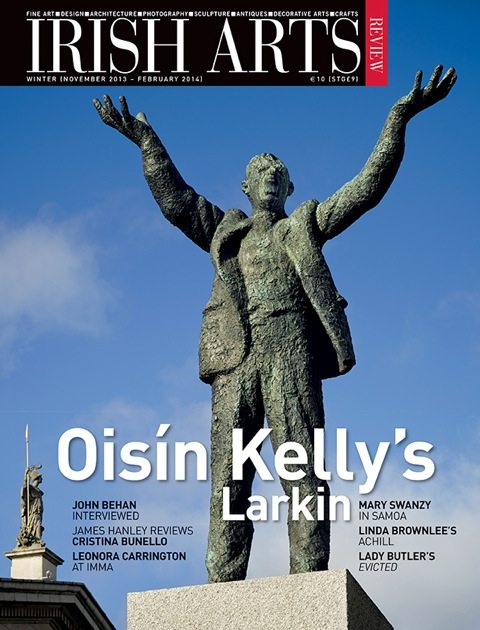
 ERIKA HANNA
ERIKA HANNA
Oxford, 2013
pp 240 12 b/w images & 4 maps h/b
£60.00/€70.00 ISBN: 978-0-19-968045-0
Ellen Rowley
Erika Hanna’s historical account of urban change in Dublin through the 1960s is a scholarly and serious contribution to contemporary Irish history studies. By focusing on the changing and distraught cityscape, through Corporation demolitions and dissenting (preservationist) voices, Hanna’s 1960s Dublin becomes a metaphor for modernizing shifts nationally and in turn, Irish identity formation towards the end of the twentieth century. Her account joins those by Frank McDonald (Destruction of Dublin, 1985) and Kevin Kearns (Georgian Dublin: Ireland’s Imperilled Architectural Heritage, 1983); in a sense, formalizing Kearns‚’ oral history and McDonald’s journalistic polemics. Though lacking the latter’s passion and primary research -McDonald’s book is by now the seminal history of Irish urbanism and indeed, an ignored cautionary tale – Hanna’s history is never dry and is bursting with rich secondary references. In fact, as a welcome contrast to McDonald’s Destruction, this new book lays its sources bare.
The book’s intention and lay out are made very clear in its fluent and often beautifully written introduction: five preservationist battles over different Georgian terraces across Dublin’s centre are discussed through seven chapters. Chapters then take in urban planning histories, architectural discourse, the advent of conservation movements, housing questions, the invasion of office buildings and Georgianism. As the book’s title Urban Change and the Irish Past suggests, the historian appears to privilege spatial evidence as method. Hanna uses the fall-out of the city-in-crisis as her text, but ostensibly, due to her analysis of predominately written accounts and her reliance on written sources, this is never an architectural or urban geographical history. While it is not set up as either a cultural geography study or an architectural history, Hanna does try to understand contemporary architectural values, and indeed unpicks the discipline from a late 1940s perspective (via John Summerson) as follows: In the twentieth century the emphasis upon an essential authenticity and truth of a building, and the ability of the expert to discern it remained, and was only reinforced by the continued development of qualitative and quantitative tools to understand historic structures(p. 5).
This quote highlights two issues running through the book. Firstly, that of Hanna’s lively engagement with the subject, which is not only unafraid to tackle big theoretical issues but actively filters and delivers such issues in lucid form. Her prose is efficient and fast-paced, but often leaves this (sluggish) reader reeling. In short, the text is consistently dense and academic. Secondly, that of the outsider interpretation of Irish architectural discourse, which is particularly clear in Chapter 3, ‘Georgian Dublin and Modern Architecture, 1950 – 65‚’. Here, the exploration is weakened by limited sources (mostly the forceful editorials of the Irish Architect and Contractor (IAC)), leading ultimately to some factual errors such as Robin Walker and Kevin Roche studying with Mies van der Rohe (Walker studied with Ludwig Hilberseimer at Chicago’s IIT, while Roche attended Mies’s IIT class for a few weeks only), and the failed Catholic Church competition of 1954 at ‘Clontarf‚’ rather than Clonskeagh (pp.54-55). Typically, the author has ignored recent scholarship in the field of 20th-century Irish architectural history, favouring instead secondary accounts by fellow historian Clair Wills.
In the same breath, Hanna should be commended for sifting through Niall Montgomery’s papers at the National Library. Montgomery was one of the loudest (and quirkiest) voices in the mid-century architectural community, but his weak built legacy has meant his near exclusion from the canon of Irish architectural modernism. Interestingly, Hanna’s lack of visual literacy in terms of the built environment (as attested by the book’s dearth of photography, maps and drawings) means that Montgomery’s and the IAC’s polemics are given disproportionate significance, distorting the history and in the end, privileging discourse over built evidence, certainly for Chapter 3.
The book’s piece-de-resistance is its description of Dublin Corporation’s demolition derby following the 1963 tenement collapses. Using mostly three weeks of Irish Press and Irish Times daily articles during June 1963, Hanna relays the dire situation with its litany of disastrous events from cracks in walls to the deaths of two girls on Fenian Street in Dublin, culminating then in the evacuation of 156 houses and the displacement of 520 families. Developing this account through Elinor Wiltshire’s photographs and Department of An Taoiseach archives, the discussion is enriched by reference to contemporary Catholic social thinking and its anti-urban concerns. Again, the author shows her tendency to face-up to the complexity of the situation by including this grey and intangible layer of the Irish modernist narrative. Clearly her history represents a move away from the more caricaturist portrayals of ‘Whittaker + Lemass = wholesale Irish modernization‚’!
As part of OUP’s Oxford Historical Monographs series, this new book is a short, tidy and specific history arising from Erika Hanna’s PhD
As part of OUP’s Oxford Historical Monographs series, this new book is a short, tidy and specific history arising from Erika Hanna’s PhD. Arguably, its position as an Irish history written from within a British institution, ensures its more outward and potentially more critical approach? Reshaping from PhD-to-book presents problems, and one hopes that factual errors can be noted, plus greater explanation of important urban history definitions such as ‘townscape‚’ included in future editions. One projects that with its useful map of sources on 1950s – 1970s Dublin history, Modern Dublin: Urban Change and the Irish Past will become a staple for contemporary Irish history studies.
Ellen Rowley is the White Post-Doctoral Fellow in Irish Art in Trinity Irish Art Research Centre, TCD.



